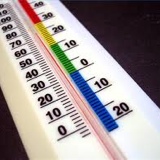Title Page
-
Site
-
Conducted on:
-
Performed By
-
Type of Inspection?
Topload Washer
- Monthly Preventative Maintenance Checklist
-
-
-
-
Observe All Safety Warnings!
-
Washer location
-
Washer #
-
Washer Make
-
Washer Model
-
1. Inspect the water fill hose connections on the back of the machine for leaks.
-
2. Check the machine for leaks:
-
a. Start an unloaded cycle to fill the machine.
-
b. Verify that the drain pump is operating and that the drain receptacle is free from obstruction.
-
3. Check the brakes.
-
4. Check the agitate/spin belt for uneven wear and frayed edges.
-
5. Make sure hose connections and hose clamps are tight.
-
a. Remove the front panel and check the pump hose connections for leaks.
-
b. Check drain hose connection for leaks.
-
6. Inspect washtub for water leaking into tub while the washer is off.
-
7. Clean the lint from the motor with compressed air.
-
8. Inspect agitator for cracks or sharp edges that could catch on clothes.
-
9. Check hardware for any loose nuts, bolts or screws.
-
10. Check all painted surfaces for bare metal.
-
11. Clean the coin drop/slide, if applicable.
Bi-Annually Preventative Maintenance Checklist
-
-
-
-
-
Observe All Safety Warnings!
-
Washer location
-
Washer #
-
Washer Make
-
Washer Model
-
1. Use the following procedure to clean the fill hose filter screens:
-
a. Turn the water off.
-
b. Unscrew the fill hose and remove the filter screen.
-
c. Clean the filter with soapy water and reinstall it. Replace the filter screen if it is worn or damaged.
-
d. Turn on water and check for leaks.
-
2. Check all hoses for visible signs of deterioration including cracks, blisters, corrosion or material wear.
-
3. Check for loose electrical connections.
-
4. Inspect cabinet panels for any damage. Replace or repair as needed.
-
5. Make sure washer is level from side to side and front to back.
-
6. Inspect lid bumpers.
Frontload Washer
- Monthly Preventative Maintenance Checklist
-
-
-
-
Observe All Safety Warnings!
-
Washer location
-
Washer #
-
Washer Make
-
Washer Model
-
1. Inspect the water fill hose connections on the back of the machine for leaks.
-
2. Clean the dispenser drawer.
-
3. Check the machine for leaks:
-
a. Start an unloaded cycle to fill the machine.
-
b. Verify that the drain pump/valve is operating and that the drain receptacle is free from obstruction.
-
4. Check the foreign object trap in the pump/drain.
-
5. Check the belt for uneven wear, frayed edges and proper belt tension.
-
6. Make sure hose connections and hose clamps are tight.
-
a. Check the pump hose connections for leaks.
-
b. Check drain hose connection for leaks.
-
c. Check door seal and inlet hose connections.
-
7. Inspect door seal for damage.
-
8. Clean and remove foreign objects between door seal and clothes guard.
-
9. Clean the lint from the motor with compressed air.
-
10. Check hardware for any loose nuts, bolts or screws.
-
11. Check all painted surfaces for bare metal.
-
12. Clean the coin drop/slide, if applicable.
Bi-Annually Preventative Maintenance Checklist
-
-
-
Observe All Safety Warnings!
-
Washer location
-
Washer #
-
Washer Make
-
Washer Model
-
1. Use the following procedure to clean the fill hose filter screens:
-
a. Turn the water off.
-
b. Unscrew the fill hose and remove the filter screen.
-
c. Clean the filter with soapy water and reinstall it. Replace the filter screen if it is worn or damaged.
-
d. Turn on water and check for leaks.
-
2. Check screens in the mixing valve.
-
a. Turn off the water.
-
b. Remove the fill hoses.
-
c. Remove the screens.
-
d. Clean or replace screens.
-
e. Replace mixing valve if needed
-
3. Check all hoses for visible signs of deterioration including cracks, blisters, corrosion or material wear.
-
4. Check for loose electrical connections.
-
5. Inspect cabinet panels for any damage. Replace or repair as needed.
-
6. Make sure washer is level from side to side and front to back.
Tumble Dryers
- Monthly Preventative Maintenance Checklist
-
-
-
Observe All Safety Warnings!
-
Dryer location
-
Dryer #
-
Dryer Make
-
Dryer Model
-
1. Remove lint and debris from inside exhaust duct to maintain proper airflow and avoid overheating.
-
2. Remove external duct and duct access covers, if present.
-
3. Clean inside of duct with a vacuum.
-
4. Clean dampers and make sure they operate freely.
-
5. Replace duct and all access covers before returning tumble dryer to operation.
-
6. Ensure even lint distribution over lint screen, replace if distribution of lint is uneven to maintain proper airflow and avoid overheating.
-
7. Carefully wipe any accumulated lint off the cabinet high limit thermostat and thermistor, including perforated cover. Lint buildup will act as an insulator, causing machine to overheat.
-
8. Clean lint and debris buildup from blower to maintain proper airflow, avoid overheating and prevent possible vibration.
Quarterly Preventative Maintenance Checklist
-
-
-
-
Observe All Safety Warnings!
-
Dryer location
-
Dryer #
-
Dryer Make
-
Dryer Model
-
1. Use a vacuum to clean air vents on drive motors.
-
2. Use a vacuum to clean lint
-
3. Check and clean Venting
-
4. Check Springs, rollers, bearing, Drum, idlers, etc.
-
5. Check belt tension and condition. Replace worn or cracked belts.
-
6. Clean the machine’s top panel with mild detergent. Rinse with clean water.































